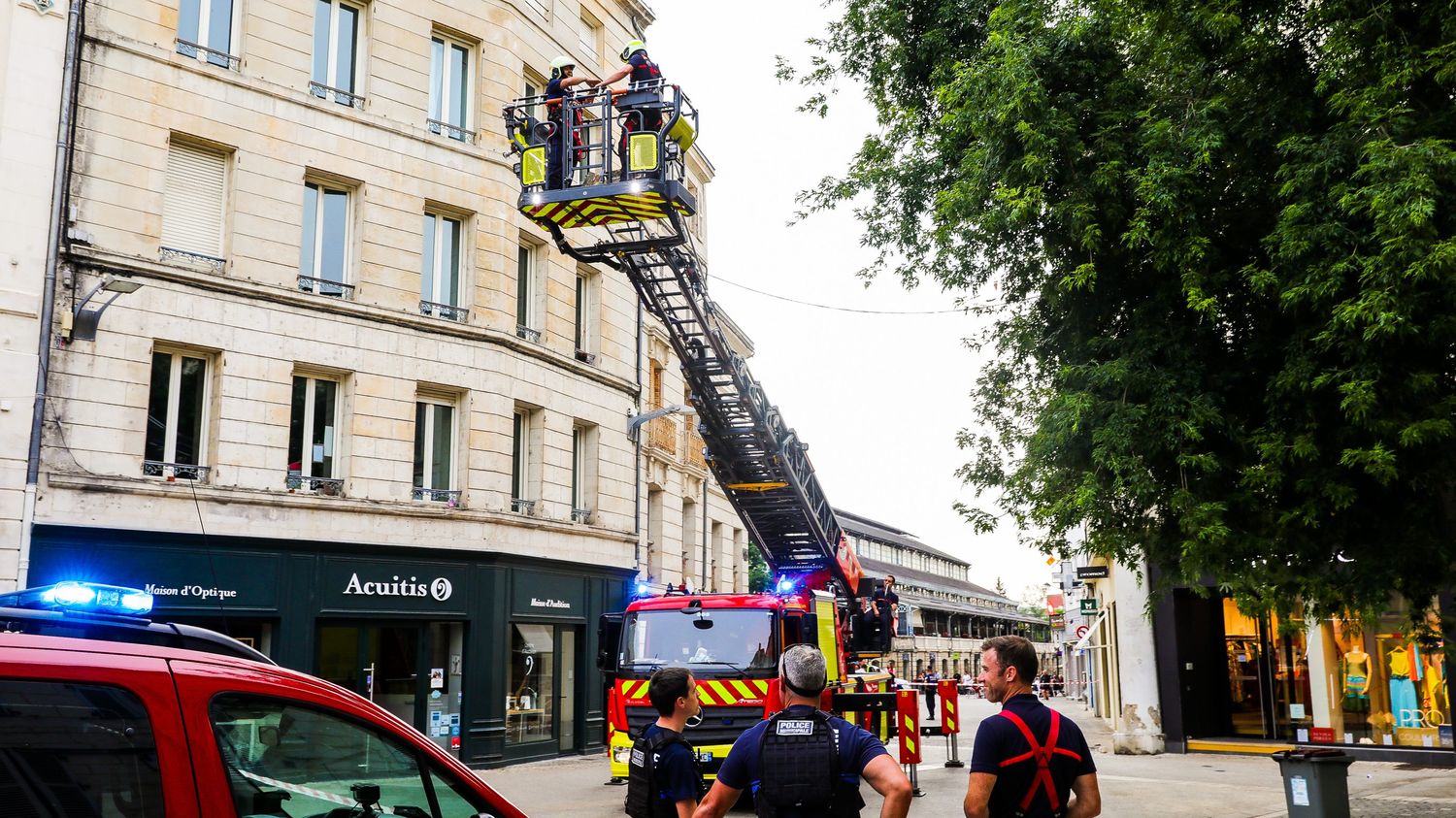The tremor, with a magnitude greater than 5, was felt more than 300 km from the epicenter, as far as Essonne.
“It was like a subway running under the house.” Lucie, a resident of Deux-Sèvres, had just returned home on Friday, June 16, when the earth shook under her feet. “It lasted a few seconds but it was intense.” The violent tremor, with a magnitude of 5.3 to 5.8 according to the National Seismic Monitoring Network (Renass) and the French Central Seismological Bureau (BCSF), occurred at 6:38 p.m. between La Rochelle (Charente-Maritime) and Niort (Deux-Sèvres).
>> “There are cracks in which you can put your hand”: almost all of a town in Charente-Maritime evacuated after the earthquake
Franceinfo answers the questions that arise after this earthquake, one of the most powerful felt in France over the past twenty years.
Where is the epicenter?
According to the Euro-Mediterranean Seismological Center (EMCS)Ihe epicenter is located around Mauzé-sur-le-Mignon (Deux-Sèvres). The United States Geological Survey Institute (USGS) locates it, to the south of the village, 3 km north of Saint-Georges-du-Bois. “It is especially towards the epicenter, in the south of the agglomeration community of Niort” that the earthquake was felt most strongly, confirmed on Friday evening the mayor of Niort, Jérôme Baloge, on franceinfo. It’s here “between Mauzé-sur-le-Mignon, Arçais and Saint-Hilaire-la-Palud, that the material damage is the most numerous”.
How far was it felt?
On Twitter, the prefecture of Essonne claims that the earthquake was felt “in certain areas” of the department. That is to say 340 km from Niort. THE earthquake also and above all caused vibrations in a good part of western France, from Le Mans to Angers, from Bordeaux to Périgueux, from Brittany to Mayenne and from Nantes to Tours.
What are the damages?
According to the Deux-Sèvres prefecture, one person was slightly injured. Almost all of the 500 inhabitants of the town of La Laigne (Charente-Maritime) were evacuated as a precaution, reports France Bleu. Most of the evacuees found refuge with relatives while a dozen people spent the night in the gymnasium of Courçon, a neighboring village.
The authorities specify that this powerful earthquake mainly caused “a lot of material damage such as falling rocks, cracks and a partial collapse of the roof”. “Several dozen houses”, “a few churches, including that of La Laigne” And “some public buildings” are cracked, lists the prefect of Charente-Maritime, Nicolas Basselier, on franceinfo.

Have there been aftershocks?
Where hethe ground shook again. A magnitude 5 aftershock was recorded “around 4:30 a.m.” Saturday June 17. According to the French Central Seismological Bureau, the epicenter is 24 km southwest of Niort, a few kilometers from the epicenter of the previous quake.. Its epicenter is again located in Deux-Sèvres.
According to the prefecture of the department, “the firefighters are mobilized and carry out reconnaissance actions, to respond to calls and check the condition of the buildings, in particular those weakened during the first earthquake on Friday”. On Twitter, the city of Niort and the firefighters are asking residents to only dial 18 or 112 if you need help.
On Twitterthe Euro-Mediterranean Seismological Center specifies that aftershocks may occur “in the next few hours and days”. What the seismologist Yann Klinger confirms on franceinfo: “A priori, each earthquake is associated with a procession of aftershocks with lower magnitudes. So it’s quite likely that there are a few aftershocks in the order of 4 or 3.”
Is the region at risk?
In France, seismic zoning was introduced in 2011. It determines five seismic zones, ranging from very low to high. According to the cartography of the Ministry of Ecology, Alsace, the Midi-Pyrénées region, the Mediterranean coast and the Alps are the most threatened regions. Charente-Maritime and Deux-Sèvres are among the moderate risk areas. “It is an area that does not move very often, but has sustained activity and has experienced some notable earthquakes over the past few years.explain Yann Klinger. “These are the remains of old faults that were active a very long time ago. They are mainly located south of the Armorican Massif. So we have this residual activity.”

How old are the previous ones?
The last deadly earthquake in mainland France dates back to August 1967, in Arette, in the Pyrénées-Atlantiques: it had one victim and several injured. Since then, sAccording to BCSF data, a dozen earthquakes with an intensity greater than 5 were felt in mainland France. IThe previous one dates back to November 2019 in the Montélimar region (Drôme). It had caused great damage in the neighboring town of Teil in Ardèche. A jolt with an intensity of 5.2 was also felt in the Gap region on April 7, 2014. Another earthquake of the same intensity shook Corsica on July 7, 2011.
